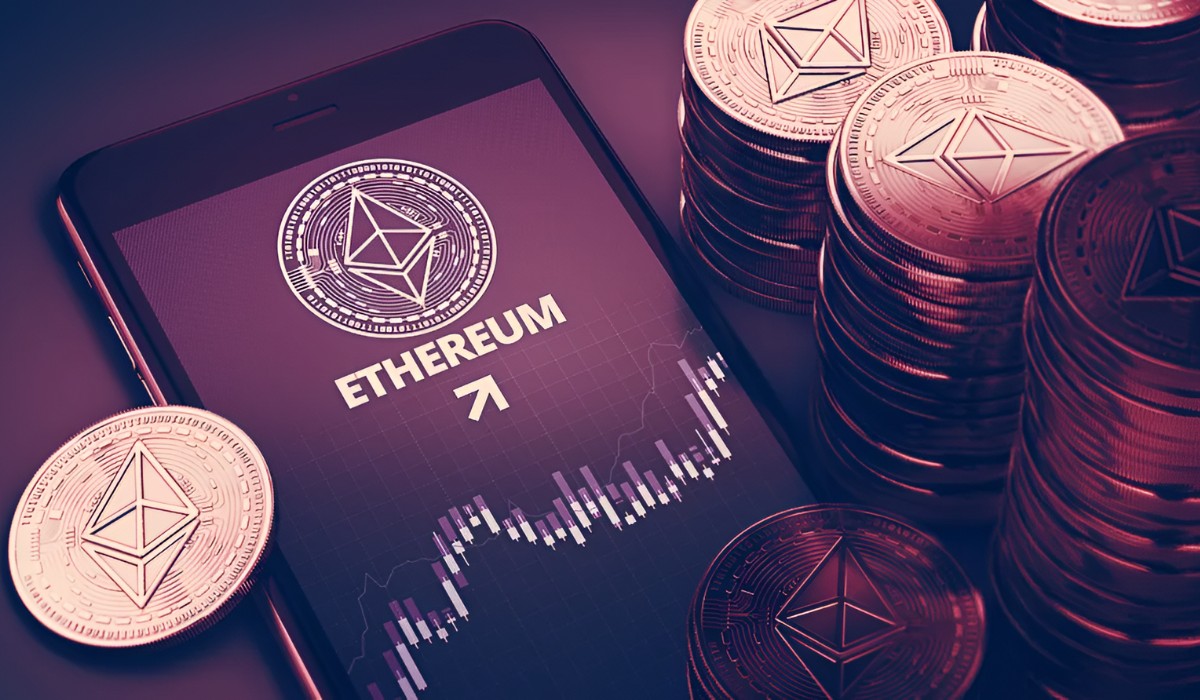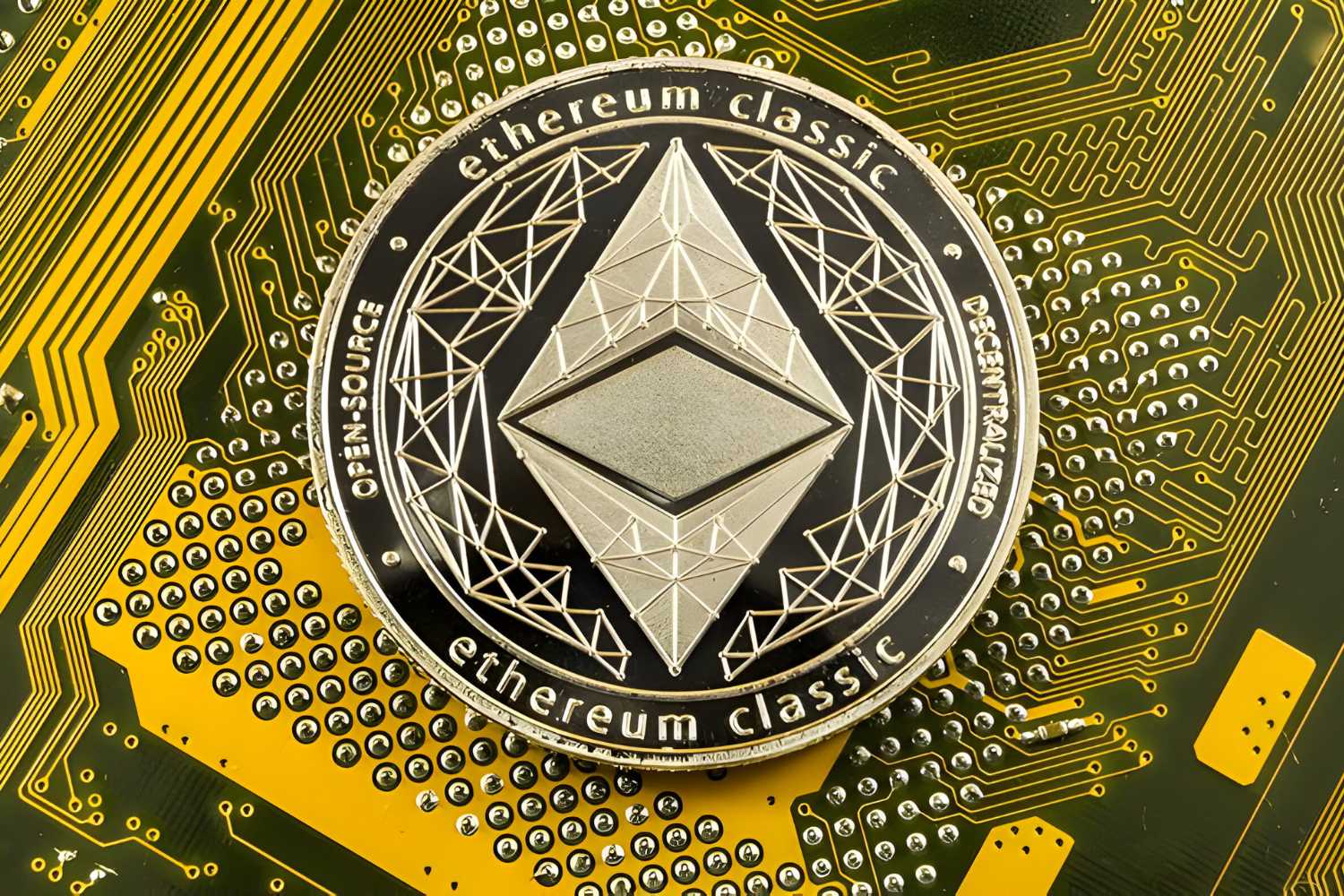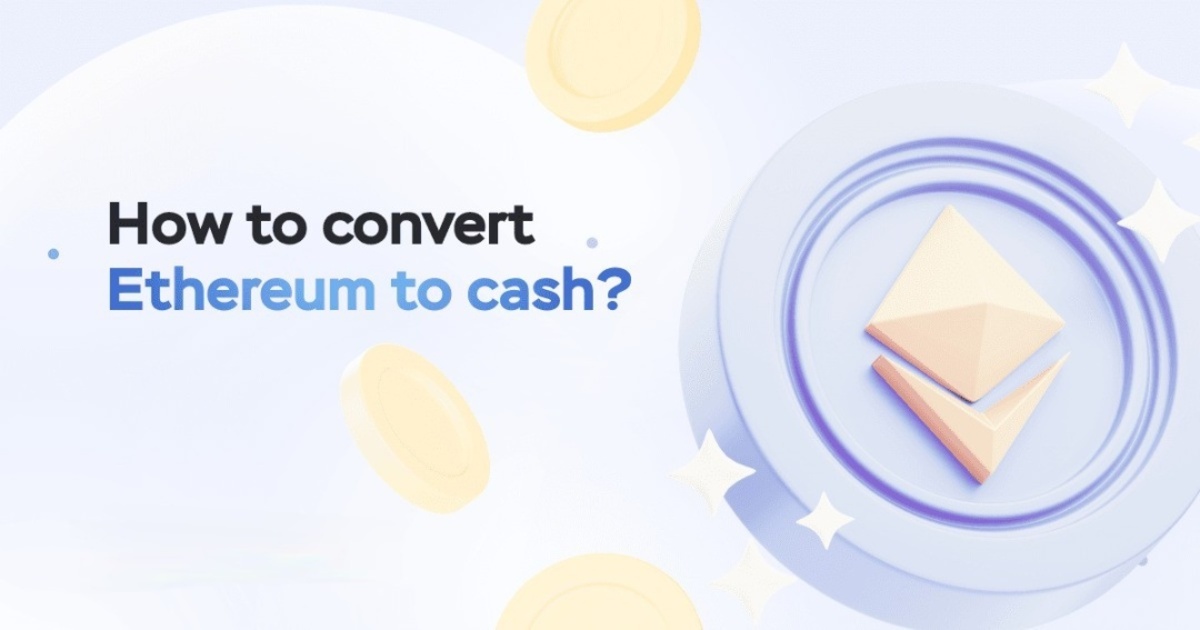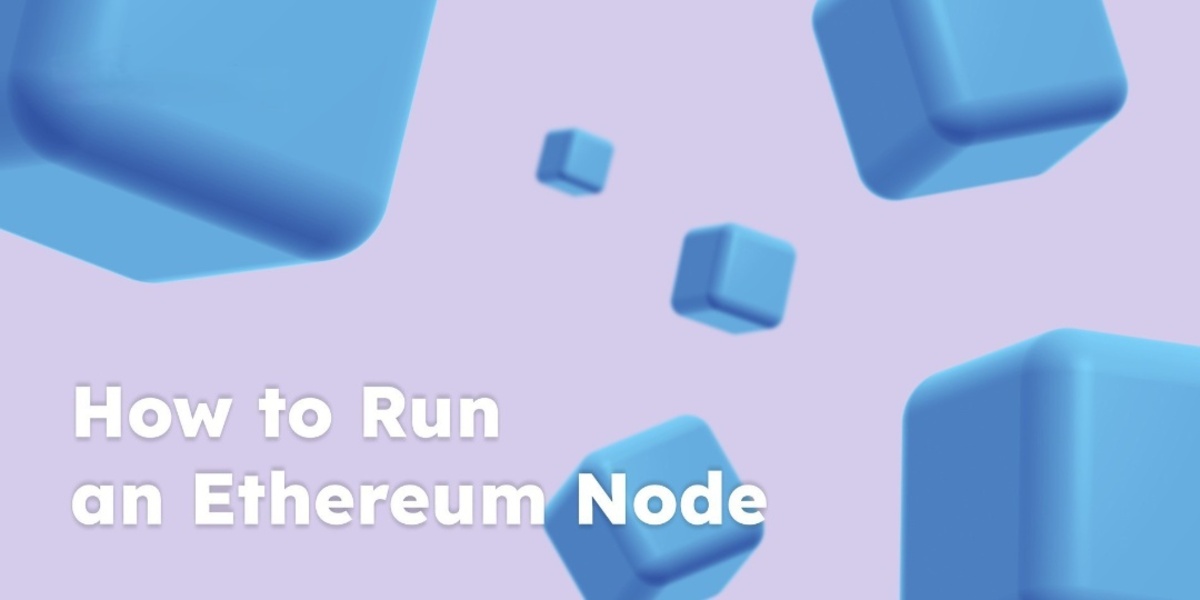Introduction
Welcome to the world of blockchain technology, where innovative decentralized applications and smart contracts are transforming the way we conduct transactions, manage digital assets, and interact online. At the forefront of this revolution is Ethereum, a powerful and versatile blockchain platform that enables the creation and execution of decentralized applications.
When it comes to Ethereum, one essential component that plays a crucial role in its ecosystem is Go-Ethereum. Go-Ethereum, also known as Geth, is the official Go implementation of the Ethereum protocol. It provides a command-line interface (CLI) for interacting with the Ethereum network, mining Ether (the native cryptocurrency of Ethereum), and running Ethereum nodes.
In this article, we will explore the intricacies of Go-Ethereum, its history, features, and how it works. We will also guide you through setting up Go-Ethereum and demonstrate how to interact with the Ethereum network using the command-line interface. By the end, you will have a solid understanding of Go-Ethereum and its benefits.
So, whether you are an aspiring blockchain developer, a cryptocurrency enthusiast, or a curious explorer, read on to discover how Go-Ethereum is revolutionizing the Ethereum ecosystem and shaping the future of decentralized applications.
What is Ethereum?
Ethereum is an open-source blockchain platform that enables developers to build and deploy decentralized applications (DApps) and smart contracts. It was introduced in 2015 by Vitalik Buterin, a young programmer and cryptocurrency enthusiast. While Bitcoin revolutionized the concept of digital currency, Ethereum goes beyond by enabling the creation of programmable contracts and applications on its blockchain.
At its core, Ethereum is a distributed network of computers (nodes) that maintain a shared ledger of transactions. This ledger, known as the Ethereum Virtual Machine (EVM), is decentralized and transparent, ensuring immutability and security. The platform utilizes Ether (ETH), its native cryptocurrency, as the fuel for executing transactions and running applications within the network.
What sets Ethereum apart from Bitcoin is its ability to execute smart contracts. Smart contracts are self-executing agreements that automatically enforce the terms and conditions encoded within them. These contracts can be used to facilitate a wide range of peer-to-peer transactions, from simple asset transfers to complex multi-party agreements. They eliminate the need for intermediaries and enable trustless interactions between parties.
Ethereum also enables the creation of decentralized applications (DApps) on its platform. DApps are open-source applications that utilize the Ethereum blockchain for backend functionality, securing data and transactions. They offer transparency, immutability, and enhanced security, making them ideal for industries such as finance, supply chain, and gaming.
Furthermore, Ethereum allows developers to issue their own digital tokens, commonly referred to as ERC-20 tokens. These tokens can represent assets, currencies, or even digital collectibles, providing a vast array of possibilities for developers and businesses alike. The Ethereum ecosystem has nurtured a thriving community of developers, entrepreneurs, and innovators, constantly pushing the boundaries of what is possible with blockchain technology.
With its robust infrastructure and rich set of functionalities, Ethereum has become the platform of choice for many blockchain projects. Its widespread adoption and support have propelled it to the forefront of the blockchain industry, revolutionizing the way we interact, transact, and build decentralized applications.
What is Go-Ethereum?
Go-Ethereum, commonly known as Geth, is the official implementation of the Ethereum protocol in the Go programming language. It plays a critical role in the Ethereum ecosystem by providing a command-line interface (CLI), which allows users to interact with the Ethereum network, run Ethereum nodes, and mine Ether.
As the official implementation, Go-Ethereum is continuously developed and maintained by the core Ethereum team, ensuring that it stays up to date with the latest advancements and improvements in the Ethereum protocol.
Go-Ethereum is designed to be efficient, reliable, and highly customizable. It offers a wide range of features and tools that enable developers to build decentralized applications (DApps) and interact with the Ethereum network. From running a full Ethereum node to interacting with smart contracts, Go-Ethereum provides the necessary infrastructure and tools to engage with the Ethereum ecosystem.
One of the key components of Go-Ethereum is the Ethereum Virtual Machine (EVM), which acts as the runtime environment for executing smart contracts and DApps. The EVM ensures that code executed on the Ethereum network is secure, deterministic, and operates within a sandboxed environment.
Go-Ethereum also includes the ability to mine Ether, the native cryptocurrency of the Ethereum network. Mining involves using computational power to solve complex mathematical problems, contributing to the security and consensus mechanism of the blockchain. By mining Ether, users can earn rewards and support the Ethereum network.
Furthermore, Go-Ethereum provides a rich set of APIs (Application Programming Interfaces) that allow developers to interact with the Ethereum network programmatically. These APIs enable developers to build applications that communicate with smart contracts, query blockchain data, and send transactions via the Ethereum network.
Overall, Go-Ethereum plays a vital role in the Ethereum ecosystem, providing the tools, infrastructure, and capabilities needed to develop, deploy, and interact with decentrali
History of Go-Ethereum
The inception of Go-Ethereum can be traced back to the early days of Ethereum itself. As Ethereum gained popularity and recognition in the blockchain community, it became apparent that a solid implementation in the Go programming language was necessary. This led to the development of Go-Ethereum, also known as Geth.
The development of Go-Ethereum began in 2013 when Jeffrey Wilcke, a core developer of Ethereum, started working on the Go programming language implementation of Ethereum. Initially, Go-Ethereum served as an experimental client for testing and evaluating the feasibility of the Ethereum concept. As Ethereum progressed and gained traction, the development of Go-Ethereum became more focused and accelerated.
In 2015, with the official launch of the Ethereum mainnet, Go-Ethereum emerged as the official implementation of Ethereum in the Go programming language. This bestowed Go-Ethereum with the responsibility of executing and validating transactions, maintaining the Ethereum blockchain, and participating in the consensus mechanism.
Since its official launch, Go-Ethereum has undergone significant development and improvement. It has been continuously updated to remain compatible with the latest versions of the Ethereum protocol, incorporating bug fixes, performance optimizations, and new functionalities. The core Ethereum team, along with an active community of developers and contributors, have played a vital role in shaping the evolution and success of Go-Ethereum.
Go-Ethereum has also contributed to the growth of the Ethereum ecosystem by providing support for various Ethereum Improvement Proposals (EIPs). These proposals encompass a wide range of enhancements and upgrades to the Ethereum protocol, addressing issues such as scalability, privacy, and security. Through the implementation of these EIPs, Go-Ethereum has helped enhance the functionality and robustness of the Ethereum network.
Moreover, Go-Ethereum has been widely adopted by blockchain projects and developers due to its performance, stability, and ease of use. Its active development and continuous improvement have made it a trusted and reliable choice for interacting with the Ethereum network. From startups to enterprise-level applications, Go-Ethereum has proven to be a valuable tool in building and deploying decentralized applications on the Ethereum platform.
As Ethereum continues to evolve and innovate, so does Go-Ethereum. The history of Go-Ethereum is a testament to the spirit of collaboration, open-source development, and the relentless pursuit of building a decentralized future.
Features of Go-Ethereum
Go-Ethereum, as the official Go implementation of the Ethereum protocol, offers a comprehensive set of features that facilitate the development and interaction with the Ethereum network. Let’s take a closer look at some of the prominent features of Go-Ethereum:
- Command Line Interface (CLI): Go-Ethereum provides a user-friendly command-line interface (CLI) that allows users to interact with the Ethereum network. The CLI enables various operations such as creating accounts, sending transactions, deploying smart contracts, and mining Ether.
- Ethereum Virtual Machine (EVM): Go-Ethereum incorporates the Ethereum Virtual Machine (EVM), a runtime environment for executing smart contracts. The EVM ensures that smart contracts are executed securely and deterministically, with consistent results across all nodes in the Ethereum network.
- Developer Tools: Go-Ethereum includes a range of developer tools and APIs that make it easier for developers to build decentralized applications (DApps) on the Ethereum platform. These tools include JSON-RPC APIs, JavaScript console, and debugging utilities, allowing developers to interact with smart contracts and query blockchain data programmatically.
- Ethereum Name Service (ENS): Go-Ethereum supports the Ethereum Name Service (ENS), which enables users to register and manage human-readable domain names for their Ethereum addresses. ENS simplifies the process of interacting with Ethereum by allowing users to transact using easy-to-remember names instead of complex hexadecimal addresses.
- Peer-to-Peer Networking: Go-Ethereum incorporates a robust peer-to-peer networking layer, allowing nodes to connect and communicate with each other in a decentralized manner. This enables the propagation of transactions, synchronization of blockchain data, and participation in the Ethereum consensus algorithm.
- Secure Wallet Management: Go-Ethereum provides a secure wallet management system that allows users to create and manage Ethereum accounts. It supports both externally owned accounts (EOAs) and contract accounts, providing a seamless user experience for handling digital assets and interacting with the Ethereum network.
- Continuous Development: Being the official implementation, Go-Ethereum undergoes regular updates and enhancements to ensure compatibility with the latest versions of the Ethereum protocol. The active development and maintenance of Go-Ethereum by the core Ethereum team and the community ensure that users have access to the latest features and improvements.
These are just some of the notable features of Go-Ethereum that make it a popular choice among developers and users in the Ethereum ecosystem. With its comprehensive toolset and robust infrastructure, Go-Ethereum empowers developers to build innovative applications and users to interact with the Ethereum network with ease.
How Does Go-Ethereum Work?
Go-Ethereum (Geth) powers the Ethereum network by running Ethereum nodes, which are responsible for maintaining the distributed ledger and executing transactions. Let’s dive into the workings of Go-Ethereum and how it facilitates the functioning of the Ethereum ecosystem:
1. Networking: Go-Ethereum uses a peer-to-peer networking protocol to connect and communicate with other Ethereum nodes in the network. Through this network, nodes propagate transactions and blocks, ensuring that the blockchain remains up-to-date and synchronized across all participants.
2. Blockchain Validation: As a node in the Ethereum network, Go-Ethereum validates and verifies the authenticity of transactions and blocks. It checks whether the transactions adhere to the protocol rules, the signatures are valid, and the blocks are linked correctly, maintaining the integrity and security of the Ethereum blockchain.
3. Smart Contract Execution: Go-Ethereum incorporates the Ethereum Virtual Machine (EVM), a sandboxed runtime environment for executing smart contracts. When a transaction involves the execution of a smart contract, Go-Ethereum runs the code within the EVM, ensuring deterministic and secure contract execution across all nodes. The results of contract execution, such as updating storage or transferring funds, are recorded on the blockchain.
4. Mining: Go-Ethereum allows users to participate in the consensus algorithm of Ethereum by mining Ether. Mining involves solving complex mathematical puzzles to validate transactions and add new blocks to the blockchain. Go-Ethereum provides the necessary functionality and tools to mine Ether, contributing to the security and decentralization of the Ethereum network.
5. Command Line Interface (CLI): Go-Ethereum offers a command-line interface (CLI) that allows users to interact with the Ethereum network using various commands. The CLI enables actions such as creating accounts, sending transactions, deploying contracts, checking balances, and monitoring network activity.
6. Developer Tools: Go-Ethereum provides a range of developer tools and APIs, making it easier for developers to build decentralized applications (DApps) on the Ethereum platform. These tools include JSON-RPC APIs, JavaScript console, and debugging utilities, allowing developers to interact with smart contracts, query blockchain data, and monitor network activity programmatically.
7. Continuous Improvement: Go-Ethereum undergoes continuous development and updates to remain compatible with the evolving Ethereum protocol. The core Ethereum team and the community contribute to its development, incorporating bug fixes, performance optimizations, and new features to enhance the functionality and reliability of Go-Ethereum.
Overall, Go-Ethereum serves as the backbone of the Ethereum network, enabling nodes to communicate, validate transactions, execute smart contracts, and participate in the consensus mechanism. Its efficient working allows users and developers to leverage the power of Ethereum and build decentralized applications that can revolutionize industries and transform traditional systems.
Setting up Go-Ethereum
Setting up Go-Ethereum (Geth) and getting ready to interact with the Ethereum network is a straightforward process. Follow the steps below to set up Go-Ethereum on your system:
Step 1: Choose the Installation Method: Go-Ethereum supports multiple operating systems, including Windows, Mac, and Linux. Depending on your preferred operating system, choose the installation method that suits your needs.
Step 2: Download and Install Go-Ethereum: Visit the official Go-Ethereum website or the GitHub repository to download the latest version of Go-Ethereum. Follow the installation instructions specific to your operating system to install Go-Ethereum on your machine.
Step 3: Configure the Ethereum Network: After installation, you may need to configure the Ethereum network settings. This includes specifying whether to run a full node or a light client, selecting the network (mainnet, testnet, or private network), and setting up connectivity options.
Step 4: Create an Ethereum Account: To interact with the Ethereum network, you need an Ethereum account. Use the Go-Ethereum command-line interface (CLI) to create a new account, which will generate a public-private key pair. This account will be used to send and receive transactions, deploy contracts, and manage digital assets.
Step 5: Sync the Blockchain: Synchronizing the Ethereum blockchain allows your Go-Ethereum node to have the most up-to-date information. Depending on the network and the state of your machine, this process may take some time as it downloads and verifies all the blocks in the blockchain.
Step 6: Use the Go-Ethereum CLI: Once your Go-Ethereum node is synchronized, you can use the command-line interface (CLI) to interact with the Ethereum network. The CLI provides a range of commands for account management, transaction handling, contract deployment, and monitoring network activity.
Step 7: Keep Go-Ethereum Updated: As the Ethereum protocol evolves, new updates and improvements are made to Go-Ethereum. It’s crucial to keep your Go-Ethereum installation up to date by checking for new releases and following the upgrade instructions provided by the Go-Ethereum team.
By following these steps, you can set up Go-Ethereum on your system and start engaging with the Ethereum network. Whether you are developing decentralized applications, experimenting with smart contracts, or simply exploring the vast possibilities of the Ethereum ecosystem, Go-Ethereum provides the necessary tools and infrastructure to get you started.
Using the Go-Ethereum Command Line Interface
The Go-Ethereum (Geth) command-line interface (CLI) is a powerful tool that allows users to interact with the Ethereum network, manage Ethereum accounts, and execute various operations. Understanding how to use the Go-Ethereum CLI is essential for developers and users looking to engage with the Ethereum ecosystem. Let’s explore some common commands and operations:
1. Creating an Ethereum Account: The Go-Ethereum CLI enables users to create Ethereum accounts to send and receive transactions. Use the command `geth account new` to create a new account. This command will prompt you to set a password for the account and generate a keystore file. Keep this file safe as it contains the encrypted private key of your account.
2. Running a Go-Ethereum Node: To connect to the Ethereum network and run a Go-Ethereum node, use the command `geth –syncmode “full”` (or `”fast”` for a faster sync). This command starts the synchronization process, downloading and validating all the blocks of the Ethereum blockchain. Syncing can take a considerable amount of time, especially when using the “full” sync mode.
3. Checking Account Balance: Use the command `geth account list` to view the list of accounts in your Go-Ethereum node. To check the balance of a specific account, use the command `eth.getBalance(ADDRESS)` in the JavaScript console. Replace `ADDRESS` with the Ethereum address of the account you wish to check.
4. Sending Transactions: To send Ether from one account to another, use the command `eth.sendTransaction({from: SENDER, to: RECIPIENT, value: VALUE})` in the JavaScript console. Replace `SENDER` with the Ethereum address of the sending account, `RECIPIENT` with the Ethereum address of the receiving account, and `VALUE` with the amount of Ether to send (in Wei). Confirm the transaction and provide the password for the sender’s account when prompted.
5. Deploying Smart Contracts: Use the Go-Ethereum CLI to interact with and deploy smart contracts on the Ethereum network. Compile your solidity contract using a compiler like Solidity or Remix, then use the `eth.sendTransaction({data: BYTECODE})` command to deploy the contract. Replace `BYTECODE` with the compiled bytecode of your contract.
6. Interacting with Smart Contracts: To interact with deployed smart contracts, you need the contract’s address and the compiled Application Binary Interface (ABI). Use the `contractInstance = eth.contract(ABI).at(ADDRESS)` command in the JavaScript console to instantiate the contract object. You can then call contract functions using `contractInstance.FUNCTIONNAME()`.
7. Mining Ether: If you want to contribute to the Ethereum network’s security and mining, use the command `miner.start()` in the Go-Ethereum CLI to start mining Ether. Mining requires computational resources, and it can take a significant amount of time to find a block, depending on your hardware efficiency and network difficulty. Use `miner.stop()` to stop mining.
These are just a few examples of the many commands and operations that can be performed using the Go-Ethereum CLI. Exploring the CLI’s capabilities and referring to the official documentation and resources will provide a deeper understanding of how to interact effectively with the Ethereum network and leverage the power of Go-Ethereum.
Interacting with the Go-Ethereum Network
Go-Ethereum (Geth) provides various methods for interacting with the Ethereum network, allowing users to retrieve information, send transactions, and interact with smart contracts. Whether you’re a developer building decentralized applications or a user exploring the possibilities of Ethereum, understanding how to interact with the Go-Ethereum network is essential. Let’s explore some common ways to interact with the network:
1. Ethereum Command-Line Interface (CLI): The Go-Ethereum CLI offers a range of commands that allow users to interact with the Ethereum network directly from the command line. These commands enable operations such as creating accounts, checking balances, sending transactions, and deploying smart contracts. The CLI provides a convenient way to perform essential tasks and manage Ethereum-related activities efficiently.
2. JavaScript Console: Go-Ethereum comes with a built-in JavaScript console that provides a more interactive and flexible environment for interacting with the Ethereum network. Users can execute JavaScript commands to interact with smart contracts, retrieve blockchain data, and perform complex operations. With direct access to the web3.js library, users can utilize the full power of Ethereum’s API.
3. Web3.js Library: The web3.js library is a widely used library for interacting with the Ethereum network programmatically. Developers can incorporate web3.js into their applications to interact with smart contracts and perform Ethereum-specific operations. The library provides an extensive set of functions and utilities, making it easier to interact with the Go-Ethereum network from within custom-built applications.
4. Ethereum JSON-RPC API: Go-Ethereum exposes a JSON-RPC API that enables communication between client applications and the Ethereum network. Developers can utilize this API to send requests for blockchain data, submit transactions, and interact with smart contracts programmatically. The API provides a standardized and convenient way to interact with the Ethereum network, compatible with various programming languages and frameworks.
5. Infura: Infura is a popular API service that enables developers to interact with the Ethereum network without running their own Geth node. It provides a simple interface to access the Ethereum network, manage accounts, and deploy and interact with smart contracts. By connecting to Infura, developers can leverage the power of the Ethereum network without the need for extensive infrastructure setup.
6. Ethereum Wallets: Ethereum wallets, both software-based and hardware-based, serve as convenient interfaces for interacting with the Ethereum network. These wallets often integrate with Go-Ethereum, allowing users to manage accounts, send transactions, and interact with smart contracts through a user-friendly interface. Wallets handle the complex processes behind the scenes, making it easier for users to interact with the Go-Ethereum network.
With these various methods for interacting with the Go-Ethereum network, users and developers have the flexibility to choose the approach that best suits their needs. Whether it’s through the command-line interface, JavaScript console, web3.js library, JSON-RPC API, or an Ethereum wallet, Go-Ethereum provides the tools and interfaces necessary to seamlessly interact with the Ethereum network and unlock the possibilities of decentralized applications and smart contracts.
Benefits of Using Go-Ethereum
There are several compelling benefits to using Go-Ethereum (Geth) as your go-to implementation for interacting with the Ethereum network. Let’s explore some of the key advantages of using Go-Ethereum:
1. Official Implementation: Go-Ethereum is the official implementation of the Ethereum protocol in the Go programming language. Being the official implementation means it is developed and maintained by the core Ethereum team, ensuring that it stays up-to-date with the latest advancements and improvements in the Ethereum ecosystem. It offers a reliable and trustworthy solution for interacting with the Ethereum network.
2. Compatibility and Interoperability: Go-Ethereum adheres strictly to the Ethereum protocol standards, ensuring compatibility and interoperability with other Ethereum clients and applications. This compatibility allows developers to seamlessly integrate their projects within the Ethereum ecosystem, leveraging the broad support and infrastructure already in place.
3. Efficient and Performant: Go-Ethereum is renowned for its efficiency and performance. It is optimized to utilize system resources effectively, running Ethereum nodes and executing smart contracts efficiently. Its lightweight nature allows for faster synchronization and better overall performance, making it an excellent choice for both development and production environments.
4. Advanced Developer Tools: Go-Ethereum provides a rich set of developer tools, making it easier for developers to build and deploy decentralized applications (DApps) on the Ethereum network. With tools like the JavaScript console, debugging utilities, and JSON-RPC APIs, developers can interact with the Ethereum blockchain, deploy smart contracts, and query blockchain data programmatically. These tools streamline the development process and enhance the productivity of Ethereum developers.
5. Robust Ecosystem Integration: Go-Ethereum integrates seamlessly with the broader Ethereum ecosystem. It is compatible with various Ethereum Improvement Proposals (EIPs) and supports a wide range of Ethereum standards, including ERC-20 tokens. This compatibility ensures that developers can work with existing Ethereum projects, libraries, and frameworks, taking advantage of the vibrant ecosystem that has evolved around Ethereum.
6. Active Development and Community Support: Go-Ethereum benefits from continuous development by the core Ethereum team, with regular updates and improvements. The project also enjoys active community support, where developers and contributors help enhance and expand its features. The collaborative nature of Go-Ethereum ensures that it remains reliable, secure, and responsive to the needs of its users.
7. Flexibility and Customizability: Go-Ethereum offers flexibility and customizability to cater to diverse requirements. Users have the option to choose between running a full node or a light client, depending on their needs for network participation. Go-Ethereum also provides various configuration options, allowing users to fine-tune their node setup and connectivity preferences.
With its official status, compatibility, performance, developer tools, ecosystem integration, active development, and customizability, Go-Ethereum stands as a powerful and reliable choice for interacting with the Ethereum network. Whether you are a developer building decentralized applications, an enthusiast exploring the possibilities of Ethereum, or a user seeking to engage with the Ethereum ecosystem, Go-Ethereum offers the necessary tools and infrastructure to unlock the full potential of Ethereum.
Conclusion
Go-Ethereum (Geth) has proven to be an essential component in the Ethereum ecosystem, providing a solid and reliable way to interact with the Ethereum network. Its official status, compatibility, efficiency, developer tools, ecosystem integration, active development, and customizability make it a top choice for developers and users seeking to leverage the power of Ethereum.
With Go-Ethereum, developers can build decentralized applications (DApps) and smart contracts, utilizing a comprehensive set of tools and APIs. The Ethereum Virtual Machine (EVM) ensures secure and deterministic execution of smart contracts, while the extensive developer tools streamline the development process and enhance productivity.
Users benefit from the performance and reliability of Go-Ethereum, allowing them to interact with the Ethereum network seamlessly. Through the command-line interface (CLI), JavaScript console, or web3.js library, users can manage accounts, send transactions, interact with smart contracts, and explore the possibilities of decentralized finance, gaming, supply chain management, and more.
Go-Ethereum’s compatibility and interoperability with other Ethereum clients and applications ensure a seamless integration within the broader Ethereum ecosystem. Its adherence to Ethereum protocol standards enables developers to leverage existing infrastructure and tools, taking advantage of the vibrant community and extensive resources available.
The active development and community support for Go-Ethereum ensure that it remains up-to-date with the latest advancements and improvements in the Ethereum ecosystem. Its continuous evolution helps maintain security, stability, and performance for users and developers alike.
In conclusion, Go-Ethereum empowers developers and users to tap into the immense potential of the Ethereum network. Its importance in the Ethereum ecosystem cannot be overstated, as it provides the necessary tools, infrastructure, and capabilities to build, deploy, and interact with decentralized applications, smart contracts, and the wider Ethereum network. With its robust features and continuous development, Go-Ethereum plays a vital role in shaping the future of decentralized technologies and the broader blockchain revolution.

























